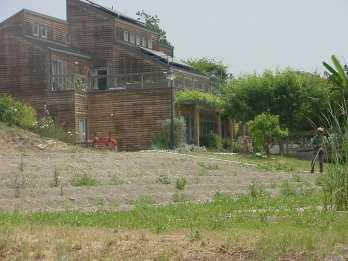The need for Sustainability
 Author: stc
Author: stc
Article Date: 08.12.2014
Mongolia's economy is on the boom. Driven by the exploitation of its vast mineral resources, the country's GDP has grown on an average by more than 9% in the last decade. The economy expanded by 12.5% in 2012 but despite this progress, analysts agree that the present model of growth is not sustainable.
Mongolia's long-term economic success depends significantly on how well it is able to develop its mining industry and manage its revenues, but also on its ability to diversify and build trade and investment relationships with its neighbours."
Mongolia has vast natural resources of copper, gold, uranium and coal. With China's increasingly insatiable appetite for exactly the minerals that its northern neighbour boasts in abundance, Mongolia is joining a small class of once-impoverished Asian nations that are going to be rich by selling to Beijing. The problem is that Mongolia's wealth is not sustainable. If the Chinese economy takes a sudden downturn, as it might, the Mongolian economy could shut down almost overnight. Even if that doesn't happen, there's no question that one day, may be in 50 years or may be in 20, the coal mines will empty.
In its latest report, the International Monetary Fund states, "In view of the uncertain external environment, Mongolia needs to change course to reduce its vulnerability to external shocks." For its part, the World Bank states that it wants to help Mongolia "build a sustained and diversified basis for economic growth and employment in urban and rural areas".
Meanwhile, The United Nations Development Programme (UNDP) warns that the rise of the Mongolian economy has come at the cost of the social and environmental dimensions of sustainable development. Approximately 30% of the population still lives below the poverty line.
Mongolia's population of three million people is spread over a vast territory of 1.5 million square kilometres, two and a half times the size of France. About 40% live in the capital Ulaanbaatar, which continues to absorb a huge influx of migrants from the countryside. A quarter of the population is composed of herders who lead a nomadic life.
The UNDP states that Mongolian production processes and practices involve high energy-intensity and raw materials extraction but that energy-efficiency mechanisms and modern production technologies are rarely available in the mining sector. The result is that large amounts of waste and pollutants are being generated and released into a once pristine environment. Greenhouse gas emissions and atmospheric particulate matter in urban areas are such that the annual average particulate matter concentrations are 14 times higher than the World Health Organization's recommended level.
One envisages a future where China becomes a leader in green technology and the circular economy, thus opening up new opportunities for Mongolia to diversify into green products and services, such as solar and wind-power generation and high-end organic food products.
Others view Mongolia at the heart of a dynamic economic area comprising Northern China and Eastern Russia, combined with an open North Korea. In this scenario, Vladivostok is a thriving seaport benefitting from an opening of Arctic sea lanes, and the free movement of goods and people across borders is commonplace.
While noting that there are various routes to diversification, the United Nations Industrial Development Organization (UNIDO) is encouraging the government to implement policies that will help develop a competitive and high value-added manufacturing sector.
Mongolia's manufacturing sector is small and accounted for only 6.2% of GDP in 2012. Of the total economically active population of around one million people, only 48,000 were employed in the manufacturing sector.
UNIDO recommends an industrial strategy based on two main pillars. First, steps should be taken to improve the quality of manufactured products for specific niche markets. Second, UNIDO proposes the aggressive promotion of Mongolian products in international markets, including participation in specialized fairs and branding. Mongolian manufacturers should be recognized for their quality, their unique identity and by price differentiation, for all of which a coherent marketing strategy is required.